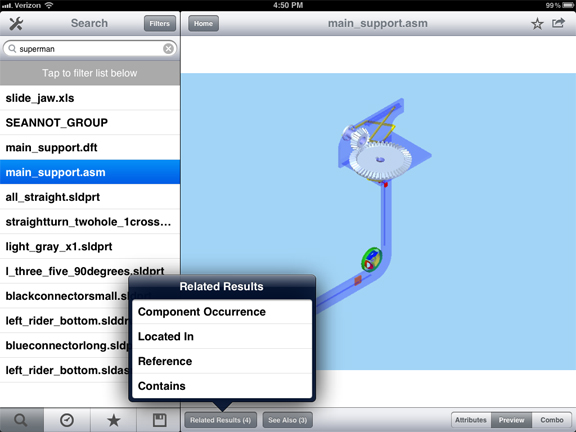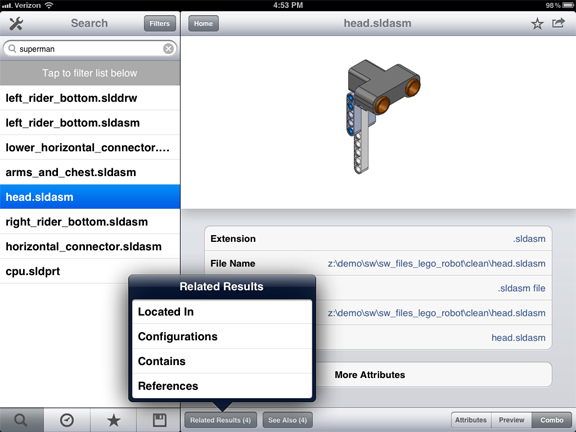Latest News
January 12, 2012
As the new year rang in, Inforbix’s COO Vic Sanchez began shooting a movie. The star of his short film was a mobile app, the outcome of the company’s efforts to bring search functions to mobile devices. With the help of a digital camera mounted on a tripod, Sanchez finished his movie and posted it to the company blog, along with the characteristic teaser line for movie trailers: Coming Soon!
This week, Inforbix‘s iPad app makes its debut on Apple app store. It’s described as “Semantic technology-based cloud apps for retrieving manufacturing & engineering product data across different CAD, PDM, & PLM systems & file types.”
Inforbix, a relative newcomer to the product data management (PDM) market, employs data crawlers to categorize and index a customer’s engineering and design data, encompassing 2D/3D drawings and office documents. The metadata is stored in the cloud, allowing users to search and retrieve matching entries from a desktop client. (Inforbix doesn’t create copies of your drawings and store them in the cloud; it only stores information about your data in the cloud.)
With Inforbix’s mobile app, you can now perform the same search functions from your iPad. Search results can be organized and filtered using a series of check boxes (by authoring CAD programs, by timeline, by document types, and so on). This allows you to locate, for example, Solid Edge files created or modified by CAD drafter X between December 1 and December 24, 2011.
Matching results are displayed with a graphical preview, along with related info (where the component occurs, where it is located, and more). If you need more details on a file, you can expand the metadata window to obtain additional attributes, such as date of creation, location path, file extension, or date it was last modified.
The previews displayed in Inforbix’s app are images, so you can only zoom and pan; you won’t be able to rotate them as you would a lightweight 3D file (a method used by some other mobile apps like Siemens PLM Software’s Teamcenter Mobility). If you have navigated away from a set of search results (perhaps because you are following its trail to where it has been used), you can use the history button (with a clock icon) to return to the previous screen. But a Back button may make this simpler in future releases of the app.
As PLM and PDM software makers join the mobile race, search and retrieval will most likely become a standard function in many of their mobile apps. Because search operation doesn’t require intensive computing power (like some geometry editing operations do), it’s ideal for mobile devices. The portability and swift boot of a mobile device gives you the choice to bypass the desktop or laptop client.
What is the downside? Well, when your boss ask you where a file is, you can’t say, “I’ll have to get back to you because I don’t have my computer with me.” Chances are, you’ll always have a mobile device with you, so you can always find a file if you have WiFi or cellphone reception.
Subscribe to our FREE magazine, FREE email newsletters or both!
Latest News
About the Author
Kenneth Wong is Digital Engineering’s resident blogger and senior editor. Email him at [email protected] or share your thoughts on this article at digitaleng.news/facebook.
Follow DE







